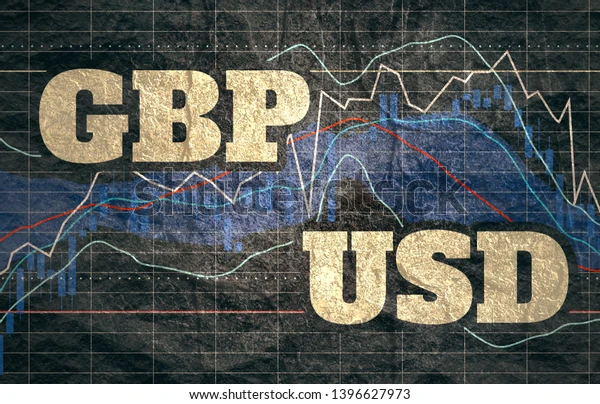GBPUSD resists 1.2200 in a careful tone, with the US NFP in focus. GBPUSD is defending the 1.2200 level early on Friday but is failing to find direction.
The duo is suffering from the dovish BoE policy stance as well as a widespread US Dollar recovery. The US NFP figures are now the main focus as market momentum increases.
Focus for GBPUSD Technical Perspective
A bearish double-top pattern has formed on the daily chart as a result of the recent failures close to the 1.2450 region. A breach will be confirmed and more substantial losses will result from some follow-through selling underneath the 1.2200 area.
The GBPUSD unit may then become more susceptible. Allowing for an acceleration of the decline forward towards the 1.2130–1.2125 support region on the way to the 1.2100 round number.
On the other hand, any significant recovery attempt presently may run into difficulties close to the 1.2270-1.2275 region before the 1.2300 level.
A prolonged strength increase could lead to an intraday short-covering movement and enable the GBP/USD pair to retake the round number, 1.2400.
The continuing upward advance, though, is more likely to be restrained close to the one-month high, in the vicinity of 1.2445. Which, if strongly crossed, will cancel out any short-term bearish tilt.
GBPUSD, NFP and BOE
The GBPUSD pair was unable to build on the preceding day’s post-FOMC uptick and on Thursday saw significant sale near the 1.2400 level. A dovish appraisal of the Bank of England’s (BoE) policy outlook caused the British Pound to start losing steam. That combined with a slight recovery of the US Dollar put downward pressure upon that major.
The BoE increased the policy interest rate by yet another 50 basis points, to 4%, the highest point since fall 2008, as was generally anticipated.
The UK central bank stated in the related policy statement that additional adjustment might be necessary in the event of indications of more sustained inflationary pressure.
The BoE did, however, take off the part about responding “vigorously, as needed. Additionally, according to BoE Governor Andrew Bailey, inflation will continue to decline throughout the year and accelerate more sharply in the second half of 2023.
In fact, the central bank predicted that by the conclusion of the year. Yearly UK CPI inflation will drop from its current 10.5% to about 4%. This in turn fanned fears that the current rate-hike trend was approaching its end and would weaken the pound.
The abovementioned fundamental aspects maintain the GBPUSD cross in a steady decline near the 1.2200 level, or a two-and-a-half-week bottom. On Friday during in the Asian session. While waiting for the announcement of the eagerly anticipated US monthly employment figures later in the early North American day, investors were hesitant to make risky wagers.
GBPUSD Fundamental Forecast – Mixed
The pound sterling is facing a number of challenges, including rising into a period of slow growth, persistent inflation that has a negative impact on expenditure, lower overall inflation. And, unsolved Brexit-related difficulties.
If the strike action in December results in negative economic growth for Q4, the BoE has the onerous task of persisting with rate increases that may already plunged the nation into a depression. Along with early optimistic inflation figures, it seems that the outlook for the pound isn’t very bright outside of the GBPUSD exchange rate, where dollar selling has helped the undervalued currency.
BOE GOVERNOR ANDREW BAILEY FORESEES A QUICK DECLINE IN INFLATION BY 2023
Andrew Bailey, governor of the Bank of England, added to the conversation by discussing inflation and the market’s estimation of the terminal rate. Bailey sticks by earlier predictions that indicate inflation will decline substantially in 2023 but remain considerably higher than the 2% goal.
Bailey referred to the positive news regarding December’s lower inflation as the “start of an indication that a corner has been flipped. Given the UK’s sustained high prices, which have made hikes in food prices a concern, his statements were reasonably circumspect.
In the coming week, there won’t be many high-impact sterling headlines; instead, the attention will be on Flash services and manufacturing PMI readings. As well as a number of important UK earnings releases from companies like EasyJet, Comcast, SAP, and Diageo, just mention a few.
The US GDP for the final quarter and if the Fed seems to be steering a smooth landing notwithstanding their own dismal retail sales figures will be the focus of next week’s news. Then, PCE inflation numbers are expected on Friday. Cable is still worth watching because of its close connection to the dollar.
GBPUSD Client Sentiment Skew
GBPUSD: Figures from active traders reveals that a net 50.27% of investors are long, with a long to short ratio of 1.01 to 1. In fact, investors having held a net long position ever since the GBPUSD rate hovered near 1.23 on January 17.
The price has subsequently fallen by 0.11%. Whereas the number of investors who are net-long has increased by 5.46% from yesterday and by 29.25% from the previous week, the number of traders who are net-short has decreased by 10.87% from Thursday and by 19.21% as from previous week.
Statistics show that for the very first time since January 17, 2023, when GBPUSD traded near 1.23. Traders have become net long GBPUSD.
The confluence of the present mood and previous developments offers us a stronger GBPUSD-bearish contrarian trading bias. Traders are more net-long than they were Thursday and last week.









